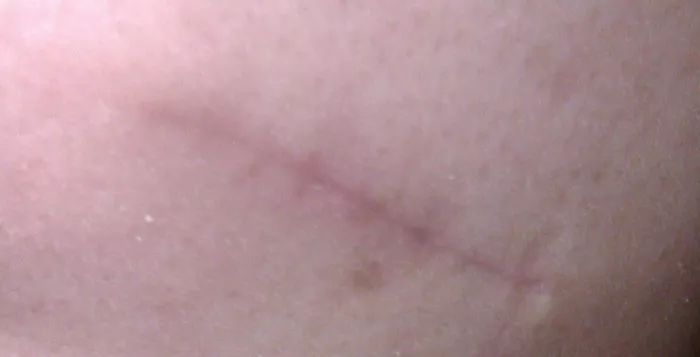Surgery scars are a natural outcome of any surgical procedure, reflecting the body’s remarkable ability to heal itself. These scars can vary widely in appearance, size, and texture depending on factors such as the type of surgery performed, individual healing abilities, and post-operative care. Understanding the intricacies of the healing process for surgery scars is essential for patients and healthcare professionals alike. In this comprehensive guide, we delve into the various stages of scar formation, factors influencing healing time, and effective strategies for scar management.
1. The Initial Healing Stage
Immediately following surgery, the body initiates a complex series of biological processes to repair the injured tissues and close the surgical incision. This initial stage is characterized by inflammation, which is a natural response to tissue damage. Blood vessels dilate to allow immune cells and growth factors to reach the site of injury, kickstarting the healing cascade.
During this phase, patients may experience swelling, redness, and discomfort around the surgical site. Proper wound care is crucial to prevent infection and promote optimal healing. Surgeons typically provide specific instructions regarding wound care, including keeping the incision clean and dry, avoiding excessive movement, and monitoring for signs of complications such as infection or excessive bleeding.
2. Proliferative Phase: Tissue Reconstruction
The proliferative phase follows the initial inflammatory stage and is marked by the formation of granulation tissue, which serves as a scaffold for new blood vessel growth and collagen deposition. Fibroblasts, specialized cells responsible for producing collagen, migrate to the wound site and begin synthesizing new connective tissue.
During this phase, the surgical scar may appear raised, pink, and tender to the touch. This is a normal part of the healing process as the body lays down collagen to strengthen the wound. While some degree of scarring is inevitable, proper wound care and scar management techniques can help minimize the appearance of scars and promote optimal healing.
3. Remodeling Phase: Maturation of Scar Tissue
The final phase of scar formation is remodeling, where the newly synthesized collagen undergoes reorganization and maturation. This process can take several months to years, and the appearance of the scar gradually evolves over time.
Initially, the scar may appear red or purple in color and may feel firm or raised. As collagen fibers realign and mature, the scar typically becomes lighter in color and softer in texture. However, the extent of scar maturation varies depending on factors such as the size and depth of the wound, individual healing factors, and genetic predisposition to scarring.
4. Factors Influencing Scar Healing
Several factors can influence the healing process and ultimate appearance of surgery scars:
Type of Surgery: The complexity and invasiveness of the surgical procedure can impact the extent of scar formation. Procedures involving larger incisions or deeper tissue dissection may result in more noticeable scars.
Age: Younger individuals tend to heal more efficiently and may experience less prominent scarring compared to older adults. Aging diminishes the skin’s regenerative capacity, making scar formation more pronounced.
Skin Type: Certain skin types are more prone to scarring, such as those with darker pigmentation or a history of keloid or hypertrophic scarring. These individuals may require specialized scar management techniques to optimize healing outcomes.
Wound Care Practices: Proper wound care during the early post-operative period is critical for minimizing complications and promoting optimal healing. Following surgeon-recommended protocols for cleaning the incision, avoiding trauma, and protecting the wound from infection can significantly impact scar formation.
Genetic Factors: Genetic predispositions play a significant role in scar formation, influencing factors such as collagen production, inflammation response, and wound healing capacity. Understanding familial tendencies toward scarring can guide personalized treatment approaches.
5. Scar Management Strategies
While complete elimination of surgical scars may not be feasible, various scar management strategies can help minimize their appearance and improve overall skin aesthetics:
Topical Treatments: Silicone-based gels, creams, and sheets have been shown to effectively reduce scar thickness, texture, and color. These products create a barrier that helps hydrate the scar tissue and modulate collagen production.
Pressure Therapy: Compression garments or dressings applied to the scar site can help flatten raised scars and improve their overall appearance. Pressure therapy works by exerting constant pressure on the scar tissue, reducing collagen buildup and promoting flattening.
Steroid Injections: For hypertrophic or keloid scars, intralesional steroid injections can help decrease inflammation and reduce scar size. These injections are typically administered by a dermatologist or plastic surgeon and may require multiple sessions for optimal results.
Laser Therapy: Laser treatments such as fractional laser resurfacing or pulsed dye laser therapy can target specific components of the scar tissue, including excess collagen and blood vessels. These treatments promote collagen remodeling and can improve the color, texture, and flexibility of surgical scars.
Surgical Revision: In cases where scars are particularly prominent or causing functional impairment, surgical revision may be considered. This involves excising the existing scar tissue and reapproximating the wound edges to create a more aesthetically pleasing outcome.
Conclusion
The healing process of surgery scars is a dynamic and multifaceted journey that involves intricate biological mechanisms and individualized responses. While scars are an inevitable consequence of surgery, proactive scar management strategies can help minimize their appearance and optimize healing outcomes. By understanding the stages of scar formation, factors influencing healing, and effective treatment modalities, patients and healthcare professionals can collaborate to achieve the best possible aesthetic and functional results following surgical procedures.
[inline_related_posts title=”You Might Be Interested In” title_align=”left” style=”list” number=”6″ align=”none” ids=”5592,5589,5735″ by=”categories” orderby=”rand” order=”DESC” hide_thumb=”no” thumb_right=”no” views=”no” date=”yes” grid_columns=”2″ post_type=”” tax=””]
































